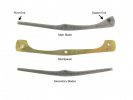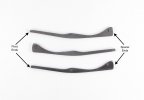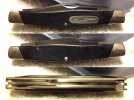- Joined
- Jul 3, 2001
- Messages
- 6,135
I am not knowledgeable on Camillus knives. With that said, when Buck contracted Camillus to produce their 300 Series, were Buck knives different than standard Camillus knives? Were any of the 300 Series models exclusive to Buck or were they all just common patterns that Camillus was producing anyway?
I assume Buck specified the black saw cut Delrin handle, but did they specify other materials and features like blade steel, brass liners, long pulls, and flat grinds? In other words, were the 300 Series knives just standard knives in Camillus' existing line with a Buck blade stamp and handle shield?

I assume Buck specified the black saw cut Delrin handle, but did they specify other materials and features like blade steel, brass liners, long pulls, and flat grinds? In other words, were the 300 Series knives just standard knives in Camillus' existing line with a Buck blade stamp and handle shield?





